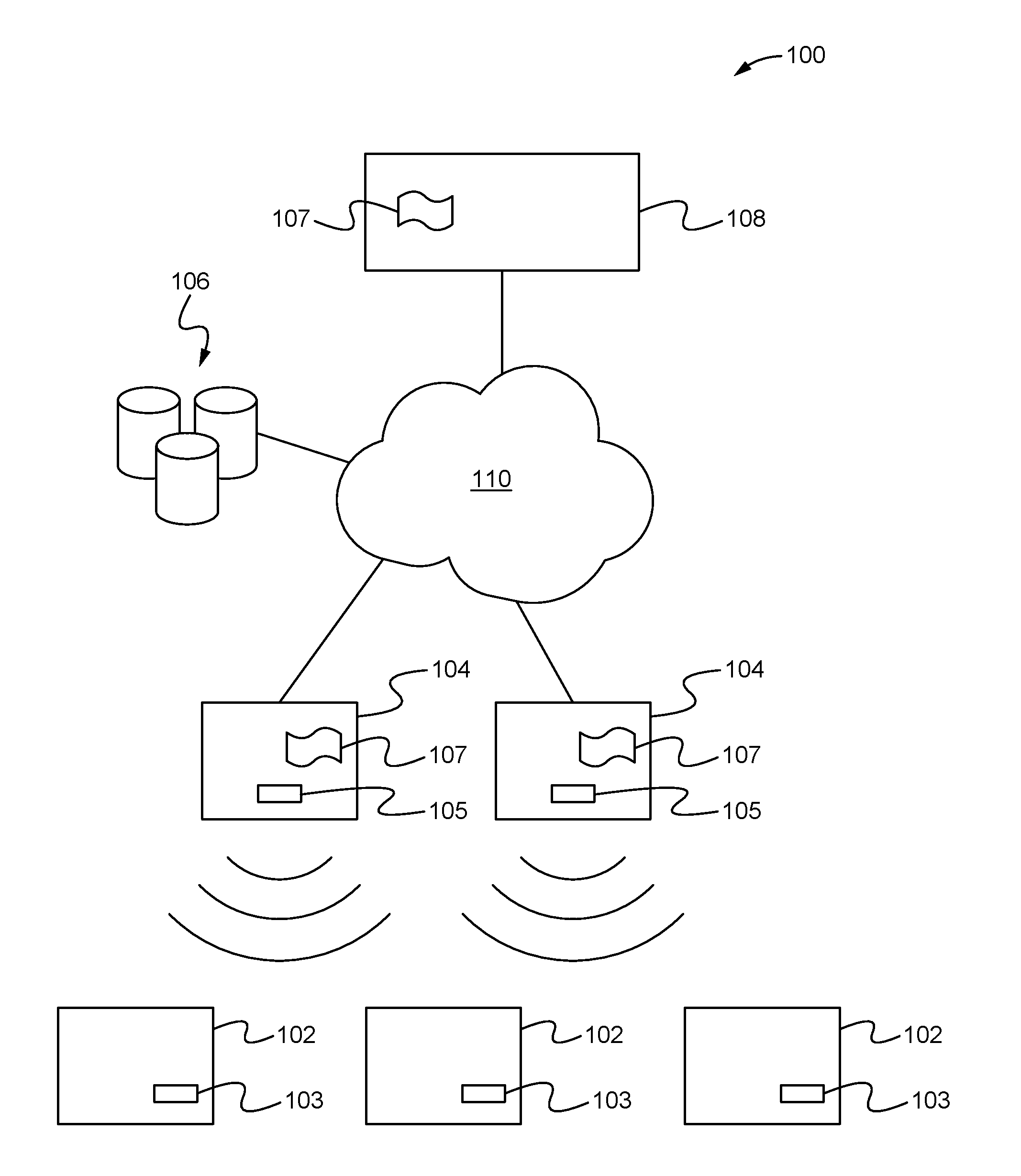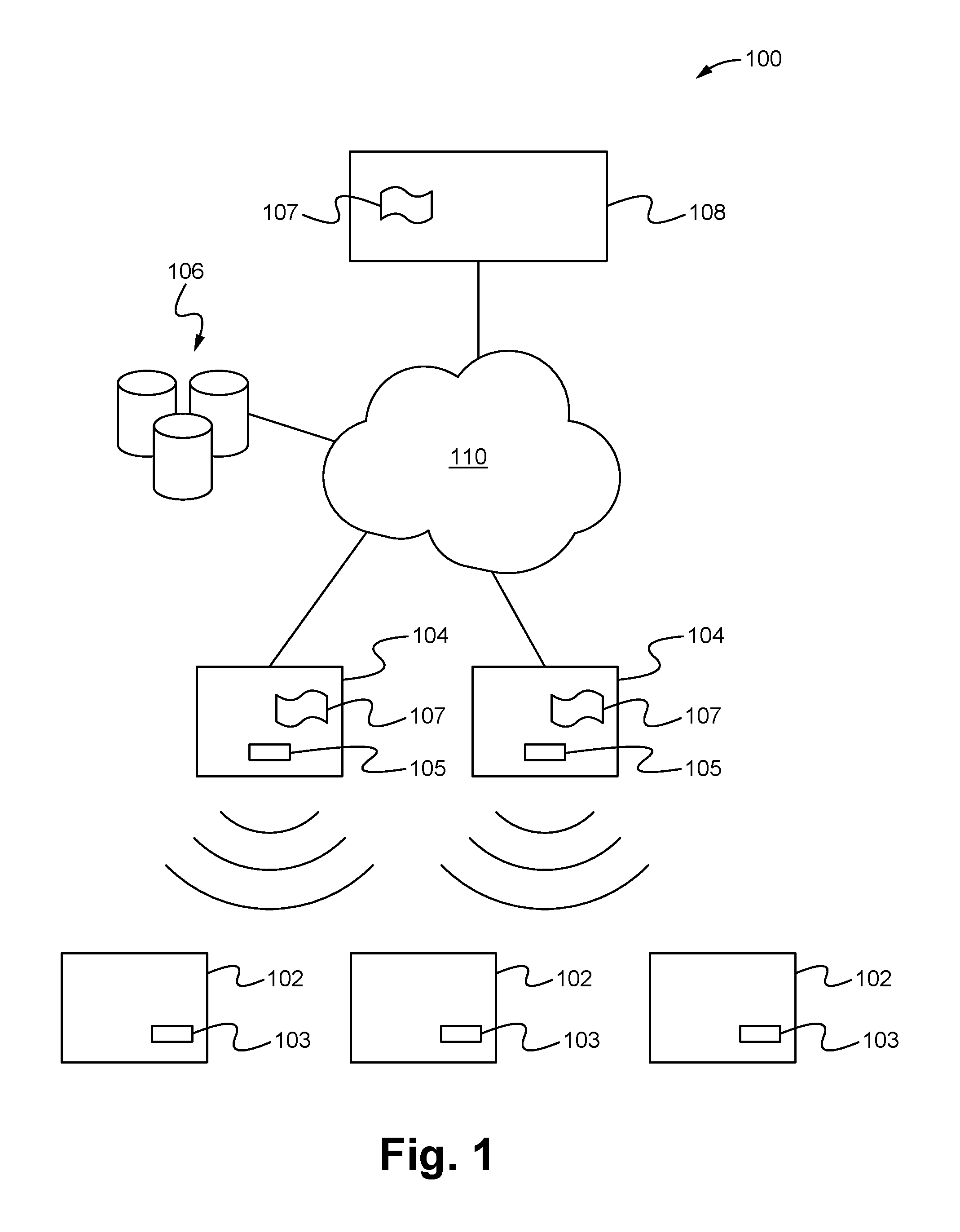Open registry for identity of things including social record feature
a social record and registry technology, applied in the field of unique identity of things, can solve the problems of poor representation of physical assets on the internet, public databases or marketplaces, and inability to machine-readable current identification methods,
- Summary
- Abstract
- Description
- Claims
- Application Information
AI Technical Summary
Benefits of technology
Problems solved by technology
Method used
Image
Examples
Embodiment Construction
[0020]Embodiments described herein are directed to an identity verification and authentication system that enables users, devices and machines to verify the identity of things and authenticate them without relying on a third-party-controlled authentication service. The system enables users to discover, review and authenticate collectable products. The system includes wireless tamperproof tags coupled to things and an open registry database where a chain of ownership of the things is able to be stored. As a result, by easily scanning a tag with a device having an authentication application, a user is able to use the system to immediately determine whether the thing coupled to the tag is authentic as well as be provided with a history of ownership and description of the thing to ensure an entity has the right to sell the thing. Additionally, the application on the device is able to enable the discovery, review and / or transfer of things having tags. Thus, the system provides the advant...
PUM
 Login to View More
Login to View More Abstract
Description
Claims
Application Information
 Login to View More
Login to View More - R&D
- Intellectual Property
- Life Sciences
- Materials
- Tech Scout
- Unparalleled Data Quality
- Higher Quality Content
- 60% Fewer Hallucinations
Browse by: Latest US Patents, China's latest patents, Technical Efficacy Thesaurus, Application Domain, Technology Topic, Popular Technical Reports.
© 2025 PatSnap. All rights reserved.Legal|Privacy policy|Modern Slavery Act Transparency Statement|Sitemap|About US| Contact US: help@patsnap.com



